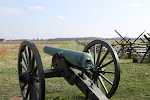A community’s history can be recreated
through the post cards issued to commemorate its locations, people, and special
events.
As I collected post cards from my hometown
of Ruston, Louisiana, I realized the hundreds of images printed for the past
century could tell the community’s history as easily as any book. In fact, I
turned those post cards into a book: “Greetings from Ruston.” Usually post
cards were intended primarily for tourists but they revealed what was important
to the community—churches, schools, successful businesses, significant
community events. More recently, post cards have been used extensively as
advertising which will tell historians a century from now much about how we
lived.
Collections of post cards can be found on
internet genealogy and history sites. Even assemblages of outrageously corny or
ugly post cards can be viewed online.
The U.S. Post Office Department began
issuing pre-stamped postal cards in 1873. The cards were created to meet the
public demand for a convenient way to send notes by mail. The Post Office was
the only entity allowed to print post cards until 1898 when Congress passed the
Private Mailing Card Act, permitting private publishers and printers to produce
post cards. Initially, the government prohibited private businesses from
calling their cards “post cards,” so they were referred to as “souvenir cards.”
Prior to 1908, no other information could be placed on the address side of the
post card, so the photo side often provided a margin for a short message.
The
first post card in the United States was created in 1893 to advertise the World's Columbian Exposition in Chicago. Shortly thereafter the United States Post Office Department allowed printers to publish a 1-cent post card
(the "Penny Postcard"). A correspondent's writing was allowed only on
the front side of these cards.
In 1901 cards appeared with the words
"Post Card" printed on the reverse (the side without the picture).
Written messages were still restricted to the front side, with the entire back
dedicated to the address. This "undivided back" is what gives this
postcard era its name.
The "divided back" card, with
space for a message on the address side, came into use in the United States in
1907. The back of the card was divided into two sections, the left section
being used for the message and the right for the address. From 1907 to about
1915, picture post cards were a wildly popular form of communication. In 1908,
more than 677 million post cards were mailed.
The “white border” era, named for obvious
reasons, lasted from about 1916 to 1930.
The “linen card” era, from 1931 to the early 1950s, was marked by the
use of cards printed on papers with a textured surface similar to linen cloth.
The current post card era of “chrome” cards began about 1939. The images on these cards are usually color
photographs on a glossy paper. Modern post cards can also be found made from
wood, metal, or bearing holograph images.
Today, many Christmas greetings are in the
form of post cards, usually with a photograph of the family. Businesses and
nonprofits often use post cards to make announcements and spread important
information without the expense of stuffed envelopes.

















Gespräche, die fake Tag Heuer wir normalerweise an Orten wie Watches & Wonders und Baselworld geführt haben, sind auf eine digitale Schnittstelle fake Audemars Piguet übergegangen - hoffentlich vorübergehend. Ein bisschen soziale Distanzierung lässt uns jedoch nicht fake IWC ohne nerdige und aufschlussreiche Chats mit den einflussreichsten Menschen hinter den Kulissen der fake Franck Muller Uhrenindustrie auskommen. Neben unseren regelmäßigen und äußerst beliebten Instagram Live-Sitzungen fake Vacheron Constantin auf dem @ablogtowatch Instagram-Konto möchten wir auch andere Möglichkeiten für die Durchführung von Interviews und Chats im fake Rolex Messestil schaffen. Dies ist das aus Gründen der Kürze und Klarheit herausgegebene Transkript eines replica Rolex solchen Interviews mit keinem anderen als Anthony de Haas, Direktor für Produktentwicklung bei A. Lange & Söhne. Ich hatte replica watches schon oft die Gelegenheit, mit Anthony zu plaudern, und jedes Mal haben wir uns in replica watches uk nerdige und aufschlussreiche Diskussionen über Lange und fake rolex die größere Uhrenindustrie verwickelt - und so war dieses neueste Interview etwas, auf das wir uns freuen replica rolex konnten.
ReplyDelete